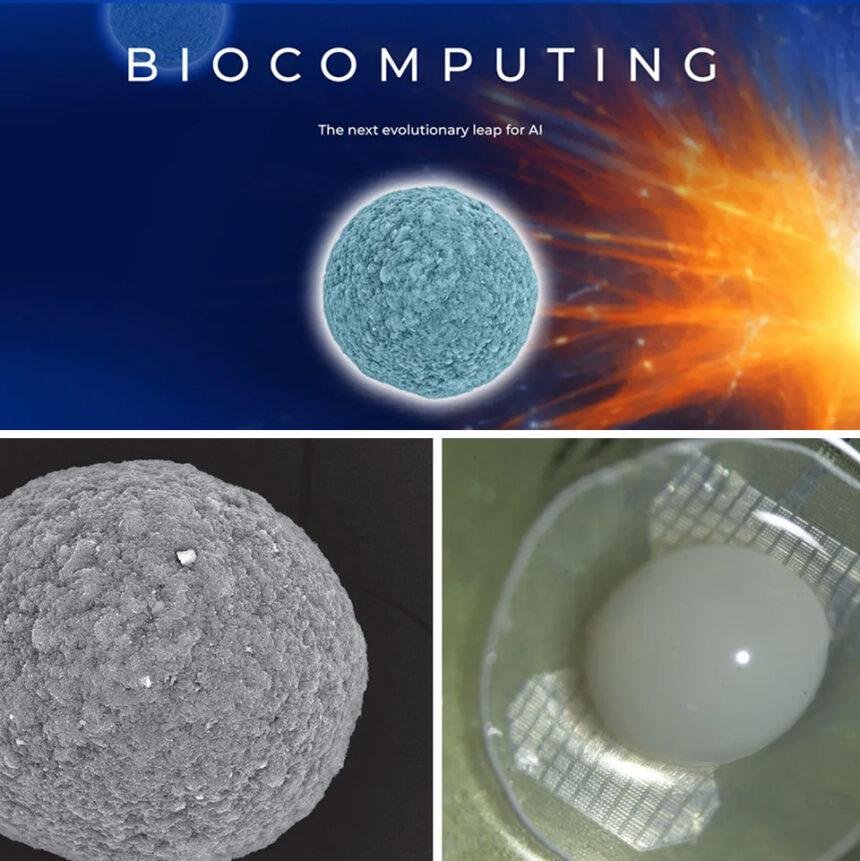Pioneering Biocomputing: FinalSpark’s Human Brain Computer Project
In a groundbreaking development at a small facility in Vevey, Switzerland, scientists at FinalSpark are venturing into uncharted territory by creating a new type of computer that merges biological elements with technology. This innovative project, which utilizes human skin cells to develop organoids, represents a significant leap in the field of biocomputing, raising both excitement and ethical questions about the future of artificial intelligence and human-machine interaction.
The Genesis of a New Computing Paradigm
FinalSpark’s lab is a hub of activity, where a dedicated team of researchers is working to cultivate a new form of computing that challenges traditional notions of what a computer can be. Dr. Fred Jordan, one of the co-founders, emphasizes the importance of this research, stating that it could redefine our understanding of intelligence and computation. The project begins with stem cells extracted from anonymous donors in Japan, a process that underscores the ethical considerations surrounding biocomputing. Only the highest quality samples are selected, ensuring that the research is built on a solid foundation.
Over several weeks, these stem cells undergo a transformation, multiplying and forming dense clusters of neurons. These clusters, known as organoids, are small, spherical structures that mimic some of the basic functions of a human brain, albeit without the complex folds and structures of a fully developed organ. The organoids are then wired to electrodes, creating a bridge between the organic and digital realms.
The Mechanics of Biocomputing
The process of wiring the organoids is where the magic happens. Electrodes are inserted into nutrient-rich solutions, allowing the organoids to float and interact with their environment. When a user inputs a command via a keyboard, an electrical impulse is sent through the setup, triggering a response from the organoids. This interaction can produce visual outputs, akin to the patterns seen in an electroencephalogram (EEG), as the organoids respond to stimuli.
Unlike traditional computers that draw power from electrical outlets and can operate indefinitely, these living systems require constant monitoring and care. The organoids can only survive for about four months without a complex network of blood vessels, which are still beyond the current understanding of researchers. This limitation highlights the challenges faced in biocomputing, where the intricacies of biological life must be navigated alongside technological advancements.
Ethical Considerations and Future Implications
The implications of FinalSpark’s work extend far beyond the laboratory. As biocomputing technology advances, it raises profound ethical questions about the nature of consciousness, intelligence, and the potential for creating sentient machines. The idea of using human cells to create a form of computing that mimics brain activity challenges our understanding of what it means to be alive and intelligent.
Historically, the intersection of biology and technology has been fraught with ethical dilemmas. From the early days of genetic engineering to the current debates surrounding artificial intelligence, society has grappled with the consequences of playing God. As Dr. Jordan and his team continue their research, they are acutely aware of the need for ethical guidelines and public discourse surrounding their work.
A New Frontier in Artificial Intelligence
The potential applications of biocomputing are vast and varied. Imagine a future where computers can learn and adapt in ways that are currently unimaginable, using organic materials to process information. This could lead to advancements in artificial intelligence that are more aligned with human thought processes, potentially revolutionizing fields such as medicine, robotics, and even creative arts.
Moreover, the ability to create living computers could pave the way for more sustainable technology. Traditional computing relies heavily on non-renewable resources and generates significant electronic waste. Biocomputing, on the other hand, could offer a more eco-friendly alternative, utilizing organic materials that can be replenished and recycled.
The Road Ahead
As FinalSpark continues to push the boundaries of what is possible in biocomputing, the scientific community and society at large will need to engage in thoughtful discussions about the implications of this technology. The journey from laboratory experiments to practical applications will require collaboration among scientists, ethicists, and policymakers to ensure that the benefits of biocomputing are realized while minimizing potential risks.
In conclusion, FinalSpark’s innovative approach to creating a human brain computer represents a significant milestone in the evolution of technology. By merging biology with computing, the team is not only exploring new frontiers in artificial intelligence but also challenging our understanding of life and intelligence itself. As this field continues to develop, it will undoubtedly spark conversations that will shape the future of technology and humanity.











